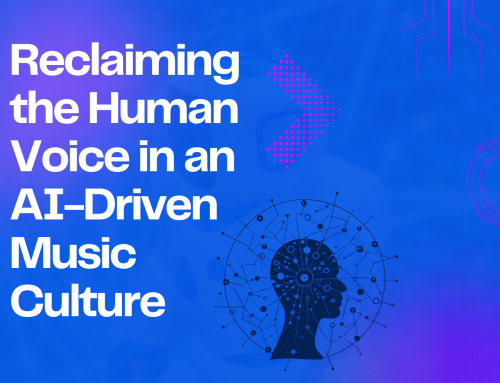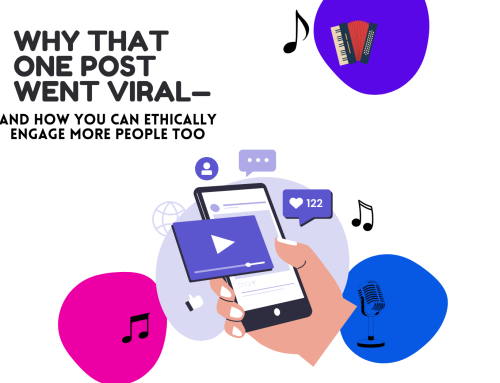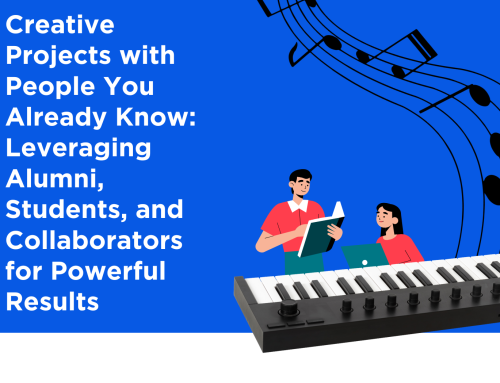by José Valentino Ruiz, Ph.D. & Thaddaeus Bourne, D.M.A.
Abstract
This article explores why creative professionals should resist the temptation to bend the truth on job applications and instead focus on aligning their career pursuits with grounded, evolving realities. Drawing from empirical research and professional development frameworks, it advocates for truthfulness, transferable skills, and quality-of-life clarity as the foundation for sustainable success in today’s rapidly changing creative economy.
Keywords: creative professionals, career alignment, truthfulness, transferable skills, professional development, quality of life, vocational sustainability
Table of Contents
Opening Up the Can of Worms
We live in an era where professional advancement is shaped by branding, networking optics, and algorithmic platforms . . . and the temptation to bend the truth in applications is very real. For many in the creative and nonprofit sectors, job descriptions read like impossibly long wish lists. Applicants are left wondering whether they should stretch the facts to match them or just to get in the room. Bending the truth might get you a job, but it won’t get you a future. It won’t produce lasting fulfillment, operational trust, or the ability to grow in a role with confidence. And more importantly, it keeps people stuck in cycles of survival instead of building lives of strategic freedom. The purpose of this article is geared toward helping creative professionals learn how to anchor in reality while still aiming high—and how to align their career aspirations with a life they actually want to live.
The Cracks That Come with Clever Lies
Professionals who misrepresent credentials to land a position may initially gain access, but what follows is often internal erosion. A 2019 study in the Journal of Applied Psychology found that applicants who overstated qualifications experienced significantly higher levels of anxiety, imposter syndrome, and job dissatisfaction within the first year (Schaerer, Schweinsberg, & Pillutla, 2019). The emotional toll stems not just from the pressure to perform, but from the incongruence of living a version of themselves that isn’t grounded in truth. In creative fields, where trust, authenticity, and sustainability matter, these cracks appear even faster. When you start with misalignment, even external success can feel like internal failure.
Why Telling the Truth Is a Career Advantage
Being honest about your experience doesn’t limit your options—it clarifies and sharpens them. Specificity communicates readiness. Even if you haven’t held a million-dollar development portfolio, you may have run high-impact, trust-building initiatives. Don’t embellish the story—own it. The Lilly Family School of Philanthropy (2020) reports that fundraisers with strong relational intelligence, mission alignment, and long-term vision perform better than those with impressive but impersonal metrics. The same holds true across disciplines: quality matters more than quantity when your work is seen, trusted, and scalable.
If You’re Not Ready, Prepare—Don’t Perform!!!
The future is evolving an unprecedented pace. From AI and AGI to hybrid teaching models, remote platforms, and digital fluency, the new creative economy demands constant upskilling. Many professionals want new titles but haven’t put in the work to understand the life and responsibility that comes with those roles. Carol Dweck’s (2006) research on growth mindset reinforces this: people who embrace lifelong learning—not just past credentials—are the ones who evolve and thrive through transition. The lesson? If you’re not yet ready for the job you want, pursue preparation before prestige.
You Might Not Be Underqualified—Just Misaligned
Many creatives are sitting on a goldmine of transferable skills: program design, public speaking, digital engagement, pedagogy, production. What they lack is clarity in translating those skills into new contexts. That’s not a problem of competency. It’s a problem of presentation. Truth-telling means presenting your capacity without posturing. It means naming what you bring—and how you intend to grow. It also means asking the deeper question: does this job align with the life I want, or just the resume I think I need?
Don’t Just Chase Jobs. Assess the Life They Create.
The job title alone is never the whole story. It comes with a rhythm, a culture, a set of expectations, a geography, and a lifestyle. Before applying, it’s worth asking: what kind of life do I want to live? Where do I want to raise my family? How much freedom or collaboration do I want? How do I want to spend my weekends? We are not built to work just to survive. We are built to steward our skills in ways that allow us to contribute and breathe. If the opportunity is financially rewarding but atmospherically toxic, it’s not a win. If it pays the bills but costs you your health, your joy, or your sense of purpose, the cost is too high.
When the Product Isn’t Selling, Rebuild It
Creative professionals often mistake social media engagement for product-market fit. But applause does not equal sustainability. If your offering—whether a service, course, or creative work—isn’t generating income, the solution isn’t to chase a backup job and inflate your résumé. It’s to retool your product. Get feedback. Reinvest. Test and refine. If you believe in your offering, make it exceptional. Don’t just hope people get it—build it until it’s undeniable. Companies rebrand and restructure to remain relevant. Creatives must do the same. Not because we failed, but because the world changed—and we want to keep building something that lasts.
Don’t Trade Truth for Temporary Access
If you lie to get in, you’ll spend your time trying not to be found out. If you walk in with truth, you can spend your time growing, collaborating, and thriving. Careers are not just vehicles for income. They are ecosystems for freedom, opportunity, collaboration, and legacy. Tell the truth—not just because it’s noble, but because it’s the only thing that will hold up under pressure.
To help professionals move from theory to action, the following step-by-step guides offer practical strategies for anchoring your career decisions and lifestyle choices in reality—not illusion. One focuses on navigating career opportunities with integrity, and the other on designing a life marked by sustainability, clarity, and freedom.
Steps to Anchor in Reality When Navigating Your Career
1. Audit your résumé and materials honestly.
Don’t embellish. Clarify. Strip away inflated language and replace it with real impact. Your work doesn’t need exaggeration—only precision.
2. Define your transferable skills.
Make a chart: what have you done in one setting that applies to another? Don’t fake direct experience—show how your track record proves you can grow into new roles.
3. Evaluate the job, not just the title.
Ask: Will I enjoy doing what this role actually demands day after day? Don’t just want the job—understand the life it creates.
4. Pursue growth before prestige.
If a job exceeds your experience, pursue supplemental training first. Watch tutorials. Shadow others. Read operational reports. Learn forward.
5. Apply where your values match the mission.
If an organization doesn’t see the value in truthfully presented experience, it’s not your loss. Focus on those willing to invest in people, not optics.
6. Track real outcomes, not digital affirmation.
Social media engagement is not the same as real professional validation. Pay attention to who is willing to support, fund, or hire you—not just like your posts.
Steps to Anchor in Reality When Evaluating Quality of Life
1. Ask where you actually want to live—and why.
Not just where you could work, but where you could thrive. Geography shapes community, rest, cost of living, and long-term well-being.
2. Clarify your desired level of freedom and access.
How much agency do you want? How collaborative? How autonomous? How mobile? Your career should serve the lifestyle you believe in—not the other way around.
3. Assess your compensation needs beyond survival.
Do the math: What does it cost to live without constant stress? To travel? To give? To save? Then build a career that supports that—not just one that pays the bills.
4. Look at the atmosphere, not just the opportunity.
What’s the emotional climate of the workplace? Are people thriving or just surviving? A toxic environment at high pay is still a poor investment.
5. Consider how your work affects your family or future family.
Does your career path support the time, energy, and flexibility needed to be present to the people you care about? That matters more than a title.
6. Don’t equate burnout with impact.
If the work you’re doing requires constant depletion, it may not be the right kind of work—or it may need to be restructured. Sustainable living is not a luxury. It’s a strategy.
Final Thoughts
Collins, J. (2001). Good to great: Why some companies make the leap and others don’t. HarperBusiness.
Dweck, C. S. (2006). Mindset: The new psychology of success. Random House.
Lilly Family School of Philanthropy. (2020). Fundraising Effectiveness Project Report. Indiana University. https://philanthropy.iupui.edu/
Schaerer, M., Schweinsberg, M., & Pillutla, M. M. (2019). Fraudulent impression management: How dishonest self-presentation undermines job satisfaction. Journal of Applied Psychology, 104(10), 1238–1252. https://doi.org/10.1037/apl0000402




Leave A Comment